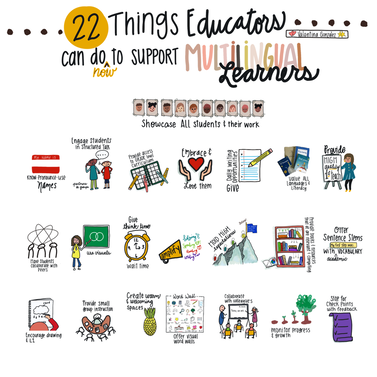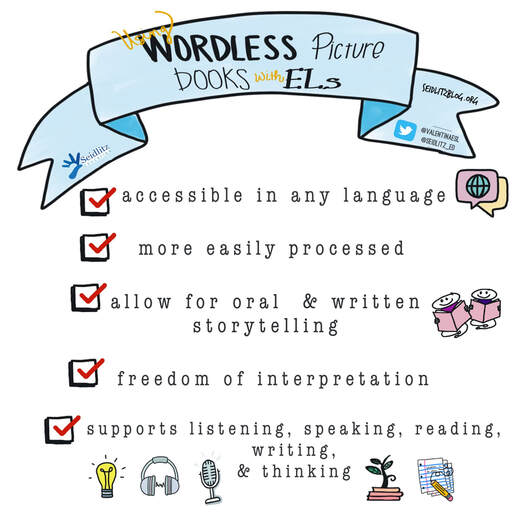|
Multilingual learners count on us to provide high-quality, comprehensible, and culturally responsive instruction in each lesson in every classroom.
Here are 22 practical and efficient ways (in no particular order) we can support emergent bilinguals as they climb to become our future global leaders. *The terms multilingual, emergent bilingual, and English learner are used interchangeably in this article and also include the acronyms MLs, EBs, and ELs.
1 Comment
This article was originally shared on the Seidlitz Blog on April 29, 2020.
Imagine you are a second grade student born in America, and you only speak English. You’ve attended English schools until now. But your father’s job has relocated your family to France, and now you are in a classroom filled with students and a teacher who only speak French (a language you have never spoken). The science teacher hands you a book and signals for you to read it. You open the book and find that it is filled with pictures…no words. First a group of horses. A mare feeding a foal. A colt running wild. Then a group of pigs, chickens, cows, etc. Instantly, you begin to think about the information you know about animals. What they are called, where they live, what they eat, etc. Though you aren’t able to communicate this information in French yet, you are able to follow along with the class and think in English using the schema and background knowledge you have about animals. Why Use Wordless Picture Books?
Teaching language structures is one of the most important things we do with our English learners. Embedding academic vocabulary into the language structures is key to their academic success. Making it interactive, engaging, and fun bumps it up ten notches! The Sentence Patterning Chart (a GLAD strategy) that I wrote about last January is an excellent way to build content knowledge and help students acquire language structures through authentic shared writing.
So if you haven't tried it yet, I highly suggest it. And if you have tried it, here's your next move! English language structures can be confusing for a student who is learning English as a second or other language. Language structures may differ and cause
English learners to struggle with language structures in English. Enter...The Sentence Patterning CHART. The Sentence Patterning Chart is an excellent method for exposing learners to English language structures while teaching content. The benefits of this technique are amazing:
|
Categories
All
|





 RSS Feed
RSS Feed
